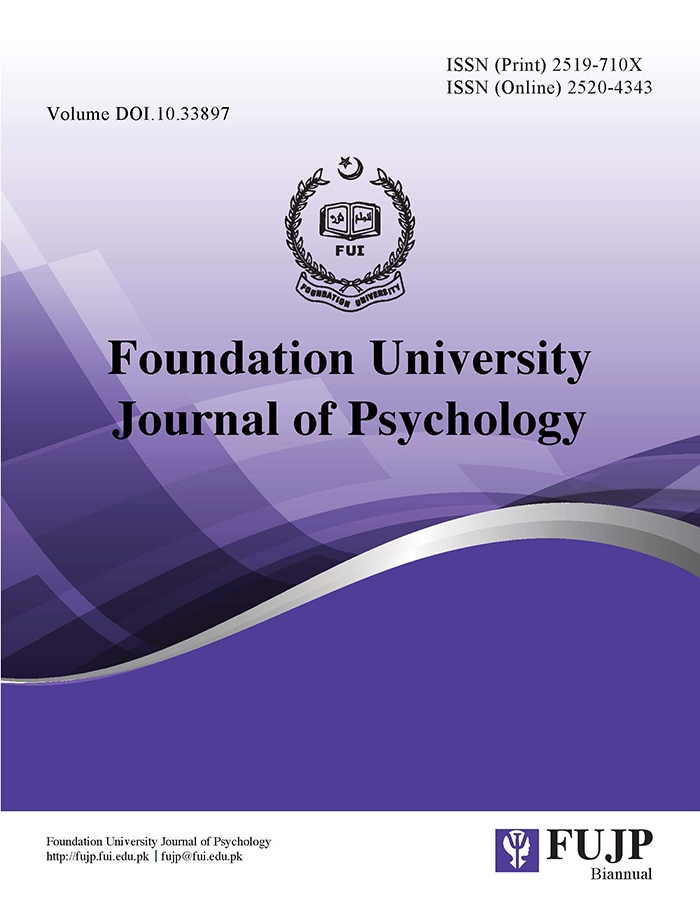Measuring Body Image Guilt and Shame: Gender and Disordered Eating Behaviors in Perspective
DOI:
https://doi.org/10.33897/fujp.v8i1.521Keywords:
Body dissatisfaction, Body image guilt and shame, Disordered eating behavior, Puberty, Adolescents.Abstract
Objectives. The goal of the current study was to investigate the association between bodily perception guilt together with shame, and aberrant eating patterns in adolescents. Differences across gender in the proposed relationship were also studied. Moderating role of gender between the study variables was also explored.
Method. Disordered Eating Behavior Scale (Muazzam & Khalid, 2011), Body Image Guilt and Shame Scale (Thompson et al., 2003), with a demographic table was employed for collecting data among 316 teenagers using convenience sampling method that included educational institutes of District Rawalpindi and Islamabad. Phase I of the study's four phases comprises the conversion and modification of Body Image Guilt and Shame Scale (Thompson et al., 2003). Results. The results in the present study indicated that aberrant eating behaviors are importantly positively connection to bodily perception guilt and shame. According to the results, boys experience more bodily perception guilt and shame as compared to girls.
Conclusion. The present study concluded that body satisfaction should be promoted among adolescents in order to prevent them from body related guilt and shame, and disordered eating behaviors that consequently enhances their psychological well-being.


.jpg)

